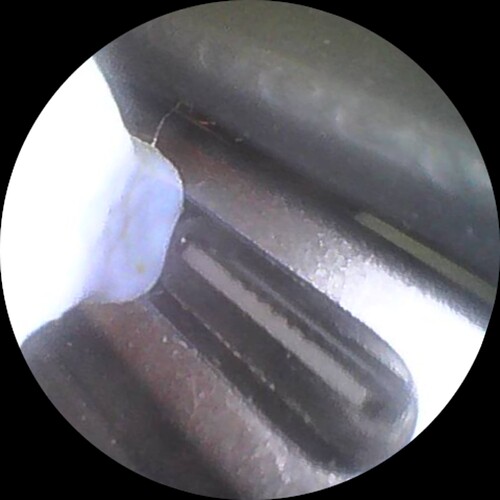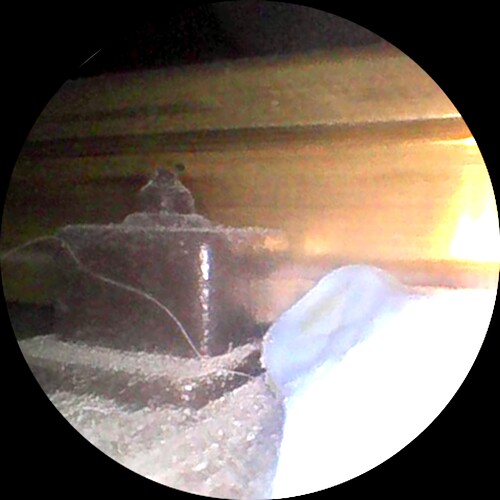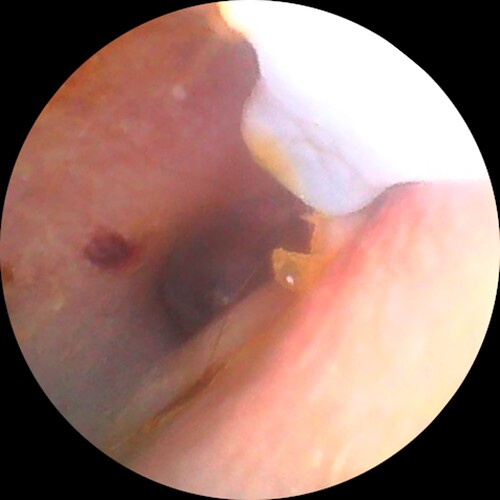I posted this article ‘elsewhere’ some months ago. The recent thread here about declining modeling skills caused me to remember it. It isn’t a perfect list, and it’s old hat to most of you. But it might be of help to somebody just getting started…
I’ve had a couple people say to me…ME!.. “I wish I could do that” referring to the stuff I’ve managed to mangle into something else or cobble together from junk into, well, a different looking bit of junk. They seem to think it odd, or I’m kidding, when I say, “You can!” … I’m probably the exact wrong person to give anybody advise, I’m in awe of what so many of you guys do. There’s an old saying (which dates back to the O vs HO debate and beyond) “As a watchmaker, I’m a pretty fair blacksmith.”… Anyhoo, enough blathering. I figured we could again use a thread JUST about basic tools and skills to help convince the new guys to come in and play. Comments and questions are always welcome…
Tools:
#1 - A hobby knife with FRESH blades. There I said it, the number one trade secret magic wand that we all use. Why sharp blades? Because there some things that an old blade WON’T do…and my dad beat into my head a long time ago that there’s nothing more dangerous than a dull knife… Sharp blades require less pressure, so the chances of slipping and cutting yourself are less. Dull blades might be OK for glue or putty spreaders, paint scrapers, or maybe wire strippers, but NOT for cutting on models.
#2 - A steel straight edge/ruler. It can be a scale one, or a hardware one. Personally I have two, one for measuring, and one for laying out. I use dividers to transfer measurements. Handy if you have them, but not absolutely necessary.
#2a - A triangle and/or square, and a compass. You’ll be laying out (drawing) a LOT of right angles, and some circles. Other stuff not as often. Swipe your kid’s geometry book if you get stuck.
#3 - A razor saw, preferably one with a mitre box, and an extra blade. Get a decent one, you’re gonna wear this sucker out.
#4 - Glue - Here’s where the experts often disagree. There are good choices and not so good choices, but rarely a “best and only” choice. I use Welder brand cement a LOT. I like it for the reason that it remains flexible, so I can undo my mistakes or change my mind. E-6000 is similar, but stinks a bit more. Others will tell you that you need plastic cement, wood glue, white glue, and one or two types of super glue to build, depending upon the materials. IMO Use whatever you are comfortable with that does the job.
#4a -Those old flat style wood toothpicks make pretty good glue applicators for small work (and occasional wedges or gap fillers, too…)
#5 - Alligator clips, file the teeth off, and you have dandy small clamps. Those medical clamps work well too, but weigh more.
#6 - Spot putty, this stuff can be your best friend, and will rescue you from some rather bad mistakes. For most jobs the cheaper automotive stuff seems to be as good as the Squadron brand. I use both.
#7 - Sandpaper, sheet, sponge, block, even emery boards 200 grit to 400 grit for most jobs, finer when you need an even smoother surface.
#8 - A nice flat hard work surface. On that note, lets face it, you’re going to make a mess. Something like an acrylic cutting board that you can just pick up and carry all the useless bits to the trash makes sense, doesn’t it? The kitchen table works, if you like bach-ing… many significant others will quickly lose patience with you if you ruin the finish and/or get nicks, glue or paint on it.
#9 - Tweezers and small pliers. Small parts are often a pain. I find myself using those bent needlenose ones a LOT, they get your hand out of the way so you can see what you’re doing.
#10 flush cutting nippers, OK you don’t NEED these, you can do the job as well or better by other means, but they speed up the job, especially if you need to cut 500 coffee stirrers to length to make a fence, or similar.
#11 - magnifying glass, hand held or on a stand. Obvious as to why, I think.
#12 - a decent light source, not so bright it hurts or casts deep shadows, but you need to really be able to SEE. I use one of those student swing arm desk lamps, with a full spectrum bulb… nothing like having stuff you didn’t see show up badly in flash pics, or broad daylight.
#13 - a sharp pencil or marker (both?)
#14 - A pin vise with an assortment of small bits. Power tools are fine, and make multiple tasks go faster, but sometimes there’s just no substitute for turning the tool by hand.
#15 A Dremel tool is handy, but has a rather steep learning curve. Like a hacksaw or Ouija board, sometimes I think the more effort you put into trying to control it, the weirder the results.
Skills:
A - First, you need to be able to draw a STRAIGHT line between two points. This you’ll be doing a LOT both on flat (easy) and curved (not quite as easy) surfaces… hint, a sheet of paper wrapped around the curved surface works most times. For curves, a template helps, I have both a template with various sized holes and something called a “french” curve, a funny shaped plastic thingie with just about any curve you can imagine. find a section that is close to what you need, and zip a line. We will leave compound curves for another day, you won’t have to do many, anyway.
B - Measure, and transfer measurements. Nothing like making a part too small. Measure twice, cut once.
C- Cut to a line, or at least cut close to the line (oversized) and file to the line. You can often score (with a knife or saw) and snap (by bending near the line) straight lines on plastics. Other shapes or materials you’ll have to actually cut the whole way through. Complex shapes, or holes in large pieces you can chain drill (drill a series of small holes around the perimeter) cut between the holes, then file to final size.
D - sand and file, This is where I sometimes get bored or in a hurry, but the better job you do the better the end result.
E- drill a hole, WHERE you want it, at the angle you want it, and the depth you want it.
F - glue, learning how much is just enough takes a bit of practice. I still use too much sometimes and have to scrape sticky blobs. Gluing in windows without at least ONE blob, string, or sticky fingerprint seems to be beyond me, though… (We are ALL still learning, even the ‘old masters’, lol)
G- Tramming, that’s where you use a piece of string to do nifty stuff like make sure things line up or are square. Sounds hard, or maybe silly, but it’s dead simple, and it works. If you hold a piece of string tight it makes a straight line Up, down, sideways, crossways, the string doesn’t care, Just sight along it and you got a straight line…and it’s often easier to use than a bulky ruler. Now, if you stretch that same string diagonally across the corners of any structure one way, and then stretch it diagonally the other, and the lengths of the string are the same, then it’s square (provided you made the opposite sides the same length, see B)
H - brush paint without too many blobs and brush marks… I CAN"T use an airbrush, so I don’t. even the guys who do airbrush still use brushes for detail work. I think I have about 5 different brushes of various sizes and shapes that I use regularly, depending on how big an area I have to cover. And since I’m a hacker. I’ll let someone who can actually paint add his tips, lol.
I - Project management. Q: How do you eat an elephant? A: One bite at a time! Just pick a place and start! Breaking a huge complex project into small, easily managed steps is the key to not getting overwhelmed. Making multiple similar parts while you already have the materials and tools out saves time as well.
I think that’s most of it… The rest is just practice. Only YOU can determine the level of detail that you are happy with, just don’t be so critical of your own first works that you quit before you even start. Like anything else there is a learning curve. The more projects you do, the better your skills get. Start with a few “throwaway” projects, tool shanties are always good, outhouses as well. Smallish projects that you won’t have much tied up in if you REALLY make a mistake on it.
—Other tips, not mine, but important to remember:
-
Don’t try working to small tolerances when you’re tired, angry or frustrated. Clean up the ol’ workbench or something until you get a grip.
-
It’s difficult to try to work while being distracted by people, loud noises, and other suchlike. Don’t be hesitant to ‘put a quiet’ in the house when needs be.
-
Don’t go buy a top-of-the-line hand tool just because ‘the experts’ own them. Buy a middle-range priced tool and learn how to use it. Then replace it with a nicer one. In this context, do not buy the cheap small tools, either. You’ll hurt and frustrate yourself.
-
Hand tools require learning (time + effort + patience) to use effectively, sometimes moreso than power tools. (Home type). Small motor skills have to be developed, but you’ll thank yourself.
-
You must learn to keep tools sharp, clean, rust and crud-free. Would you eat today’s meal with yesterday’s fork?
-
Don’t be hard on yourself when you screw up. Everybody does. So will you. One great satisfaction is, eventually you’ll realize how rarely you do make a mistake, compartively. You’ll have a sense of satisfaction with yourself that is priceless.




 Unexpected new tool for the workshop — and it’s not what you think!
Unexpected new tool for the workshop — and it’s not what you think! plus tariffs) seriously cheap.
plus tariffs) seriously cheap.



